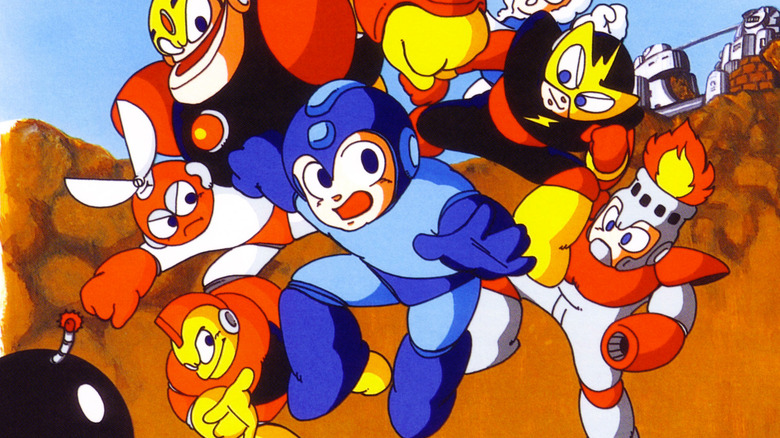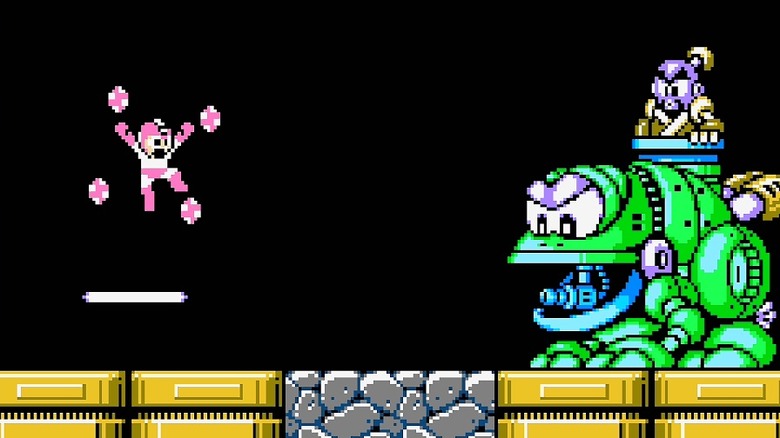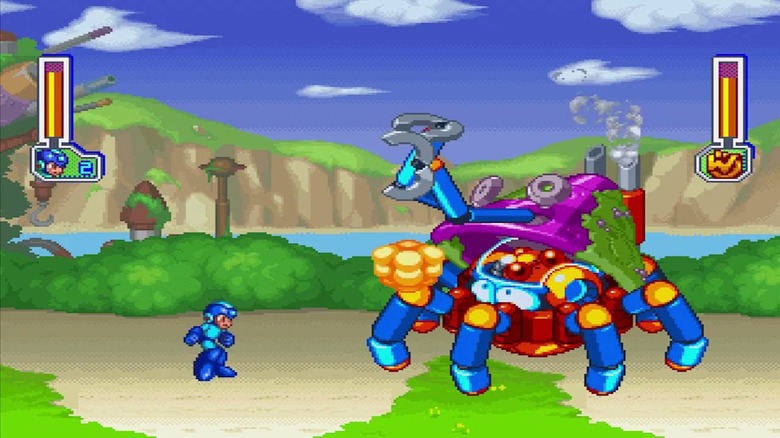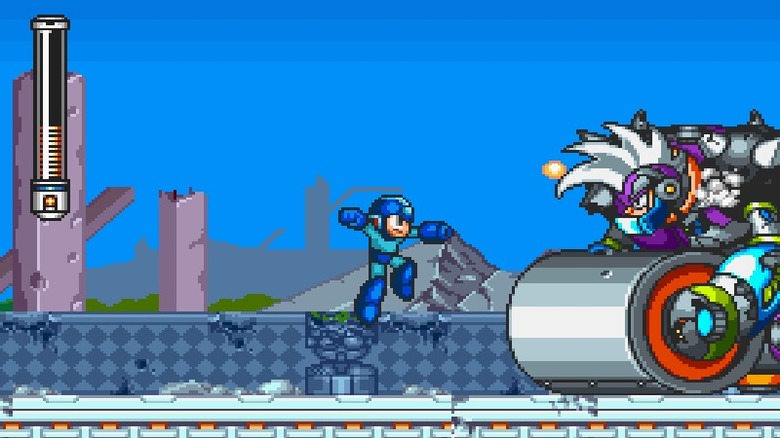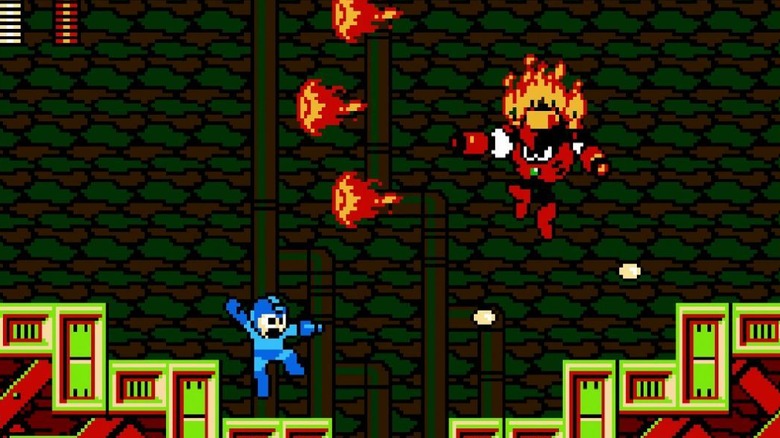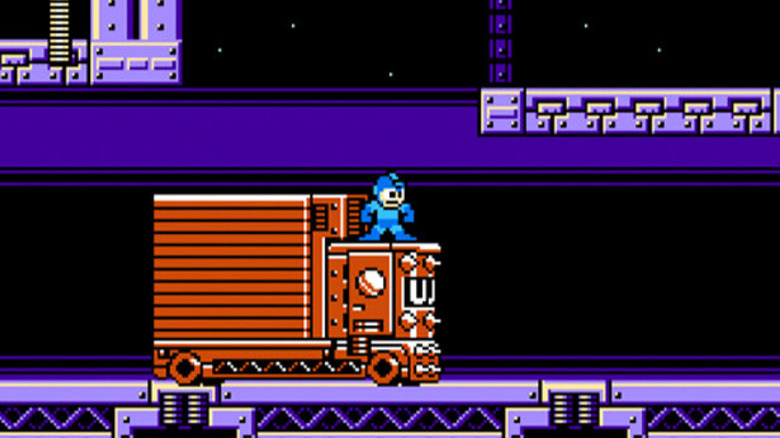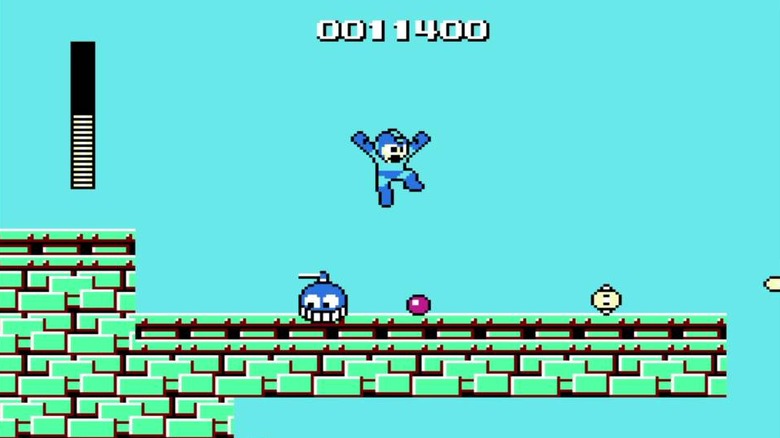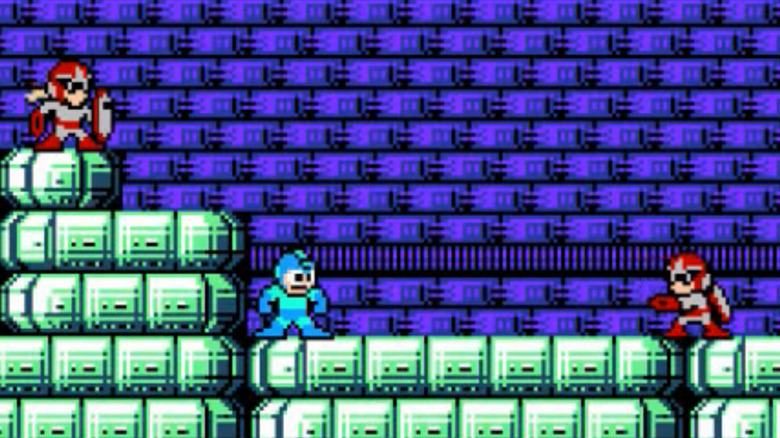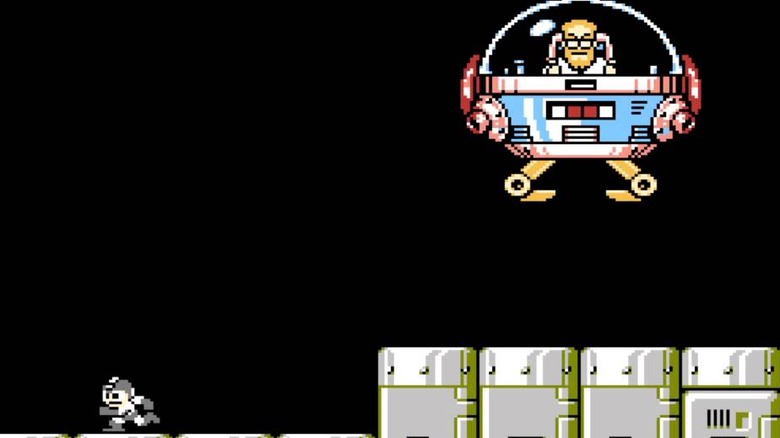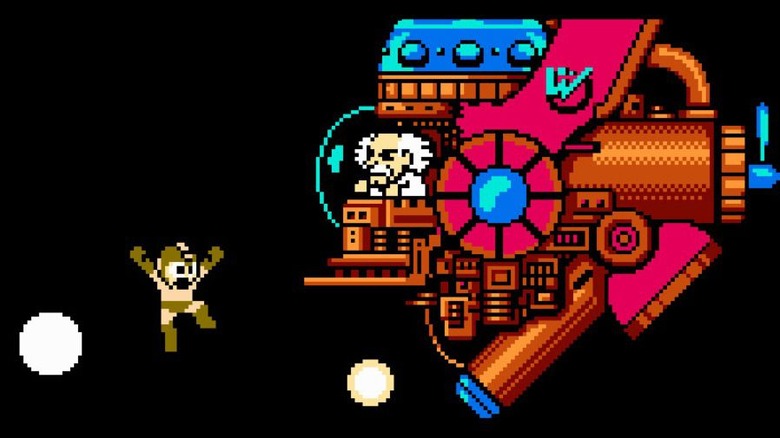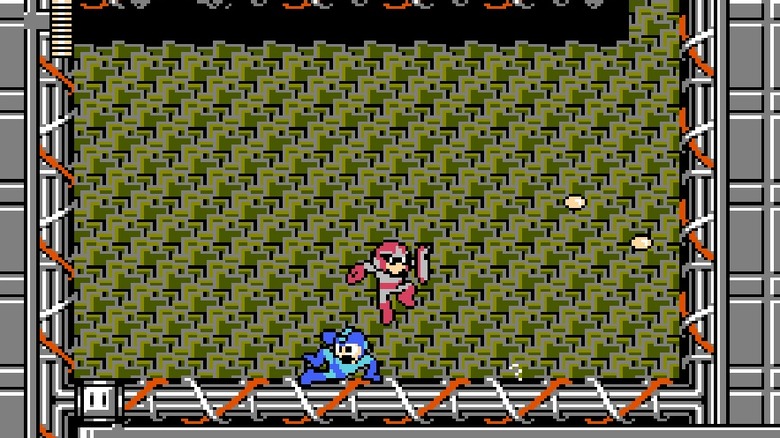Ranking The Core Mega Man Games From Worst To Best
Few video game franchises have lasted nearly as long as the core Mega Man series. Since 1987, we've gotten ten games, with an eleventh arriving in late-2018. It's the AC/DC of game series, since it's basically the same thing every time–mad scientist commands evil robots, go blow them up–but gamers never seem to tire of it. Not every Mega title is created equal, though. Some are worth your time and others can easily be ignored. In order from worst to best, here's what we think of each chapter in Mega Man and Dr. Wily's endless feud.
Mega Man 6
Like a long-running horror franchise, Mega Man couldn't make it to number six without looking staler than month-old bread. Capcom was likely going through the motions at this point in the early '90s, placing most of its creative focus on the then-forthcoming 16-bit Mega Man X series while all but admitting how bored they were with the original 8-bit Blue Bomber on the NES.
The plot went exactly the same as the previous two games: there's a new bad guy, you beat them, then you learn Wily was actually behind everything. This time it's even sillier, because the red herring is Mr. X, a mysterious mad scientist who is literally Wily in disguise. At least before, he tried to frame actual separate beings, instead of just slapping on sunglasses and a fake beard like a kid who forgot Halloween until the night before. If Wily can't be bothered to care about his big twist, why should we?
As for the game itself, it was pretty similar to what we'd already been playing, only less interesting and memorable. About the only new feature was how some stages now let you take alternating paths to the boss, but that rarely amounted to more than a quickie scenic-route side-road, if that. All in all, you'd do well to avoid Mega Man 6, unless you absolutely must blow up every robot available.
Mega Man 8
The one and only 32-bit core Mega Man didn't make a great impression for several reasons. For one, you could only choose between four stages at a time–conquer those, and an additional four would open up. This did nothing but add linearity to Mega Man that nobody asked for.
In addition, this was the first classic Mega Man game to feature voice acting...and also the last. That's because Mega Man 8's voice acting might be the most ridiculous in gaming history. Mega Man, for whatever reason, sounds like a elementary schoolgirl, while Dr. Light talks exactly like Elmer Fudd, going on about "Dr. Whywee" and "energy cwystals." The evil bots don't fare much better — Frost Man sounds like a Looney Tunes reject (which is fitting, since IMDb asserts that he's voiced by Dr. Light's Fuddsian actor, too), Clown Man squeaks like Urkel putting on an '80s valley girl voice, and Aqua Man actually threatens you with "I'm Aqua Man, but you can call me Handsome Guy!" Sorry, pal, Jason Momoa you are not.
As for the game itself, it's mostly standard Mega Man fare, with the added ability to use more than one weapon at once. That's a neat idea, but you don't need it to win, so the one new thing Mega Man 8 brings to the table is really only useful if you're pretending Mega's gone rogue and is utterly annihilating everything in his path. Come to think of, that's a great idea for Mega Man 12. Get on it, Capcom.
Mega Man 7
Mega Man 7 was the first (and last) 16-bit core Mega Man game, and the first to sport that sad "only four robots at a time" thing. Aside from that, and prettier graphics, it was basically just another Mega Man game, though it's memorable for finally dropping the pretense that somebody other than Dr. Wily is behind everything. No captured scientists, no disguised robots, no ugly fake beard–Wily's your Big Bad from the start, so give Mega Man 7 points for honesty, at least.
Besides the "four bosses" deal, Mega Man 7 is a worthy addition to the franchise. It introduced two new characters: Bass and his dog Treble, an anti-hero duo meant to combat both Mega Man and their creator, Dr. Wily. They proved popular enough to reappear in subsequent games, sometimes as playable characters, other times as rivals. In addition, Mega Man 7 was the first game where you could purchase items by collecting bolts, something you've been able to do in most every Mega game since.
Best of all, Mega Man 7 features absolutely no terrible voice acting, just text. One scene at the end, after you beat Wily, memorably features Mega Man threatening to kill him. When Wily reminds him robots can't harm humans, Boy Blue screams, "I am more than a robot! DIE WILY!!" Mega Man doesn't pull it off, but simply expressing such a sentiment is pretty badass, and maybe even something he should've said several games ago.
Mega Man 9
In 2008, twelve years after Mega Man 8, Capcom gave us a sequel for PS3, Xbox 360, and Wii. But it didn't look like a game from that era–rather, Capcom replicated the 8-bit Mega formula, making 9 look and sound much like 1 and 2. It was a breath of nostalgic air, and the game itself was pretty damn good too, though it didn't add much new outside of Splash Woman, the first (and so far only) lady evilbot in series history. The game does sport dozens of challenge stages, so if you don't care about Wily, and just want to test yourself by beating bosses with nothing but the Mega Buster, Mega Man 9's got you covered.
Speaking of the Buster, you can't charge it in this game. You also can't slide, since the point of the game, according to Capcom producer Hironobu Takeshita, was to mimic the "old, early" games in the series. At first, it feels pretty awkward–long-time Mega Man fans have gotten so used to sliding and charging, not using those abilities just feels weird. Plus, it makes no sense in canon. Mega Man had those powers in previous games, so why would he suddenly not? That said, it does add a fun new challenge, but if you'd rather not deal, you can always play as Proto Man, who can both slide and charge. It's a rare example of the prototype being way better than the finished product.
Mega Man 10
Mega Man 10 was the second 8-bit styled Mega Man game for the PS3/Wii/360 generation, though it could well have been called Mega Man 9.5. The game was extremely "by the book," and little innovation made the final cut. However, Capcom clearly read the book thoroughly, because 10 improved the already-fun 9 in almost every way.
For one thing, Mega Man 9 was missing Bass, so 10 made him playable, alongside Mega and Proto. Both have the same powers as before, while Bass can dash like Mega Man X. He can also fire his arm cannon in seven directions. The more options a game gives players, the better.
Storyline-wise, it's another "Wily's not the bad guy, then he totally is" deal. The game does introduce the idea of "roboenza," a deadly flu only robots can catch. That made for a somewhat more interesting plot than "Wily frames someone for his crimes." Plus the end-game twist–where Wily gets sick, is saved by our heroes, and shows his gratitude by gifting them piles of the roboenza antidote–raises intrigue for the future. Will Wily legitimately be good in Mega Man 11? Probably not, but it's nice to dream.
Mega Man 10 suffers, though, by featuring two of the lamest Robot Masters ever: Sheep Man, who's an actual sheep, and Strike Man, who is...a baseball. Seriously. At this rate, Capcom will give us Couch Man and Diaper Man for Mega Man 11.
Mega Man
Unlike Corn Flakes, Mega Man is the original, but not the best. It's an unabashed classic that started everything, and its system of letting you tackle the stages in any order you like, then gaining the weapons of the bosses you defeated, was positively revolutionary for the time. Subsequent games, however, have improved on almost everything to the point where Mega Man, while a great game, almost feels incomplete.
So what does the first Mega Man sport that dates it? For one thing, there's only six robots, though a 2006 PSP remake introduced Oil Man and Time Man to make it eight. Plus, Wily's castle has no map, a minor-but-pivotal part of the series's personality. In addition, you can't slide or charge up your Mega Buster, and there are no additional characters who can. Then there's the points system, something Capcom experimented with in this one game and then immediately abandoned. Gamers don't need 200,000 points when they've beaten Wily–they just need to beat Wily. Seeing him groveling on the ground after getting his tail whipped is reward enough, as is the knowledge that they've successfully fought for everlasting peace.
Mega Man 5
The final NES Mega Man game worth anyone's time, Mega Man 5 is a worthy addition to the franchise. By this point we were growing wise to the "Wily's not behind it all, actually he is" twist, but this take was a fun one. He disguised a robot as Proto Man and had him lead an army of evil robots–since Proto Man was still pretty enigmatic, him being bad was shockingly plausible. Of course, the Wily reveal was no surprise, but Evil Proto was fun while it lasted.
Mega Man 5 added to the mythos by introducing Beat, Mega Man's bird buddy whom you could summon after collecting enough letter plates. Once you did, Beat would lay the smackdown on enemies and bosses alike. (Of course, by Mega Man 6, Beat had grown lazy and wouldn't attack bosses.) Other than that, it's simply a good, solid game that didn't offer much new, but did everything old right. It offered fun stages and memorable bosses–like Charge Man, who's literally a train–which is ultimately what most Mega Man fans require above all else.
Then there's the Gravity Man stage, which features an alternating-gravity gimmick where you moved on the ground or ceiling, depending on what side of what switch you triggered. This was either a fun and different way to play, or completely infuriating and annoying, depending on how often you absentmindedly walked past a switch and, like the Fresh Prince, found your life flip-turned upside-down.
Mega Man 4
Mega Man 4 was the original "here's a new bad guy, actually nope it's Wily" game, from back when the twist was still fresh and fun. In addition, fighting two doctors gave us two castles and two castle maps, which was an awesome tradition that sadly didn't survive past Mega Man 6. (Presumably, Wily failed so much he could no longer afford two new castles a year, and was forced to make cutbacks.) What's more, Mega Man 4 introduced Dr. Cossack, the scientific genius forced to work with Wily in exchange for his daughter's safety, and who then spends the rest of the series on the side of good.
As for innovations, the game boasts two: one minor and one totally epic. This was the first game to feature Eddie, a flip-top bot who appeared at various points in the game to throw Mega Man randomized items. Sometimes you got a 1-Up or an energy tank, while other times the little jerk would prank you with weapon energy when you didn't need any. More importantly, however, Mega Man 4 introduced the ability to charge your Mega Buster for stronger shots, which changed the franchise completely. It's almost weird to play any Mega-games without it at this point.
Mega Man 2
After the first Mega Man introduced the franchise's formula, Capcom immediately got to work perfecting it. With Mega Man 2, they got most of it right, establishing the ideal Mega setup: eight evil robots, a spooky Skull Castle with a map, and Transport Items like jetpacks and wall-climbing platforms, which help you navigate some of the game's more aggravating sections.
As for the game itself, you couldn't ask for much better. All eight boss robots are among the most memorable in franchise history–even pushovers like Bubble Man will forever hold a place in gamers' hearts. The music is some of the most iconic in game history, from the "time to fight the boss" tune down to Wily's Castle theme. Even Wily's final stage, which features no music whatsoever, is memorable for the downright eerie vibe its silence invokes. Speaking of that final stage, when you fight Wily, he turns into an alien. The reveal that the evil doc was not of this world was mind-blowing at the time. While it may have been a letdown to learn at the very end that it was just an illusion, simply teasing such an idea helped endear the series to gamers everywhere.
Mega Man 3
Mega Man 3 might be the perfect core Mega Man game. Aside from no charged Mega Buster, basically everything that truly makes a Mega Man game appears here. You've got eight awesome robots (plus four extra stages featuring bosses based on the already immortal Mega Man 2 baddies), then Wily's castle. What's more, Mega Man 3 abandoned the generic Items in place of Rush, the lovable dog sidekick who was an immediate smash hit–because if there's one thing gamers love more than games, it's doggies.
Rush wasn't the only series-changer Mega Man 3 introduced. Foer the first time, Mega Man could slide, which added a whole new dimension of play and strategy. We also met Mega Man's older brother, Proto Man. He obsentibly worked for Wily, and would appear throughout the game to fight his baby bro, but winds up saving his life at the end because blood is thicker than paychecks. Speaking of Wily, this game marks the first time he swerves Mega Man by pretending to turn good, only to later reveal he's just as evil as ever.
Memorable stages, musical earworms for days, and a difficulty level that's just Nintendo Hard enough to demand your attention, but not so hard you turn into Rage-Quit Man, round out the reasons why Mega Man 3 is Blue Bomber at his peak. If Mega Man 11 wants to claim the top spot, it will need to be amazing. And leave Couch Man at the Robot Thrift Store.

